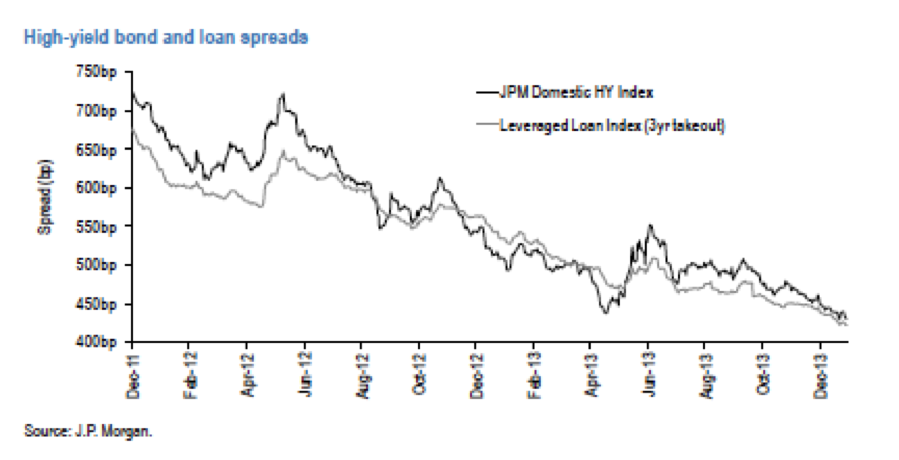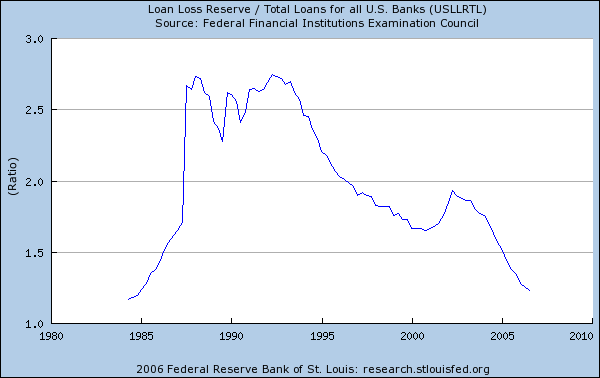The Hidden Risks of Bank Loan Funds
Post on: 12 Май, 2015 No Comment

Retail investors are currently pouring money into “bank loan” funds at a record rate, and the longer term implications are cringe worthy.
The popularity and rationale for investor interest has some merits, but only on the surface. The reasoning goes that interest rates are still at historically low levels, and investors are reticent to take on interest rate risk in the form of longer duration bonds.
Bank loans, commonly referred to as floating rate funds, are viewed by many investors as providing a modest source of income while being generally free of interest rate risk. Sounds great, right?
Unfortunately this narrative is far from the truth and the surge in popularity has created an extremely poor risk/reward outlook for holders.
Rise in Popularity
As described above, investors are seeking refuge from potential rises in interest rates by piling in to bank loan funds. New issue institutional loan volumes exploded in 2013 to
670bil, more than two times the amount issued in 2012, and well above pre-crisis levels.
Leveraged loan mutual fund flows by Lipper below show that retail investors jumped into this asset class as inflows rose 5x during 2013 to
62bil compared to 2012.
Institutions Equally Bullish
The rise in popularity has extended well beyond retail investors, with institutional demand staying strong from pension funds and other money managers. Below are a few sample RFP requests for bank loan managers.
High Demand Causes Managers to Reach for Yield
Given the large amount of inflows to their funds, bank loan fund managers don’t have a lot of choice where they will deploy the capital. Large inflows have forced them to invest in new offerings even if the credit quality is marginally lower.
As shown below, the spread between BB and B rated loans as well as B and CCC rated loans is well below historical averages. Investors are willing to go down in credit quality to pick up incremental yield, but are they being properly compensated for this?
With default rates at near historic lows, investors haven’t had to worry too much about the credit aspect. Now that credit quality is arguably worse, and the compensation for taking on incremental risk at all time lows, what will happen to prices and returns when a cyclical downturn occurs? Historically, a large percentage of high yield bonds and leverage loans don’t get “paid back”, but rather they either are refinanced or defaulted on.
81% of the Leveraged Loan Index Trades at Par or Higher
Leveraged loan prices have rallied substantially since the financial crisis and as of this month 81% of the JPMorgan Leveraged Loan index trades at $100 (par) or higher.

This dynamic leaves a very negative asymmetric (or negatively convex) return profile for the loan prices. Loan prices are capped on the upside due to call features while there isn’t any protection on the downside. Simply earning the coupon is fine, but investors need to understand that their upside is relatively capped.
Covenant-Lite Loan Volume Exploding
The chart below shows new-issue first lien covenant-lite loan volume by year. Covenant-lite deals are not bad in and of themselves, but they’re certainly missing a layer of protection that other deals offer. The provisons in these covenants, which allow investors to bring issuers to the negotiating table sooner rather than later in cases of trouble, can mean all the difference in the world in terms of a potential default and/or recovery.
The Coupon Won’t Actually Float Right Away
A little known fact about leveraged loans is that many are priced at what’s called “libor floors”. This means that while the underlying loan might be priced at 3 month libor + 300bps, it might have a floor of 4.00%. This means that 3-month libor, currently at
24bps, would need to rise 76bps before the coupon adjusts higher.
So if short rates, including 3mo libor, rise 50bps many of these loan coupons will not adjust higher. The result of such a scenario is that the prices will likely fall as investors will require a similar margin over 3mo libor as they did before the rate rise.
Overall, the risk versus reward characteristics for leveraged loans appear to be very skewed to the downside. Historically low defaults, the illusion of a coupon resetting higher in lock-step with interest rates, and modest current income have caused investors to pour money into bank loan funds at a record pace. Unfortunately, the prospective returns given these aforementioned factors as well as the marginally worse credit structures leave investors vulnerable to interest rate and credit risk that they do not realize exists.
Like this article? You should subscribe to Inside Investing here
The views expressed here are those of the author, not CFA Institute or his employer.














